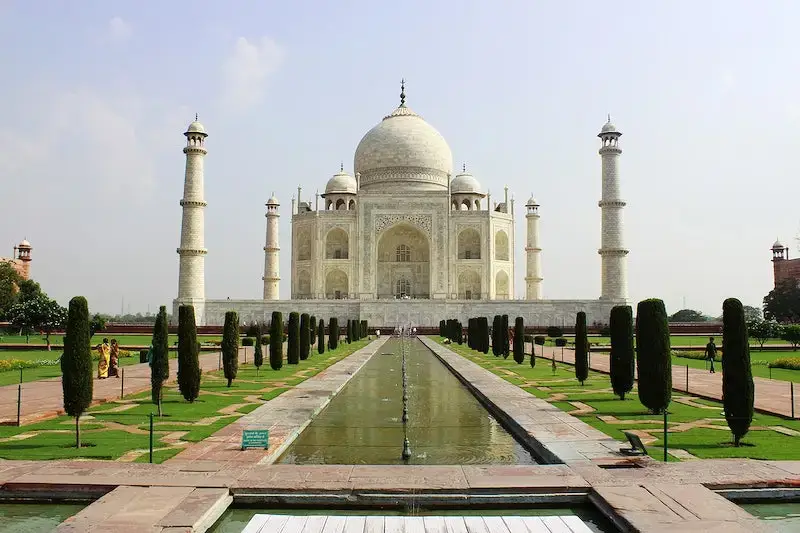Follow the trend

The Taj Mahal, an architectural masterpiece and a symbol of eternal love, stands as one of the most iconic landmarks in the world. Located in Agra, India, this majestic structure has captivated hearts and minds for centuries. In this captivating journey, we will explore the history, grandeur, and significance of the Taj Mahal. Join us as we delve into its location, architectural marvels, the story behind its creation, and the awe-inspiring beauty that awaits within its walls.
1. Agra: Home to an Icon: The Taj Mahal is situated in the city of Agra, in the northern state of Uttar Pradesh, India. Agra, known for its rich history and cultural heritage, attracts millions of visitors each year who come to witness the magnificence of the Taj Mahal.
2. Riverside Majesty: The Taj Mahal stands proudly on the southern bank of the Yamuna River, providing a picturesque backdrop that adds to its ethereal charm.
1. The Main Structure: The Taj Mahal is a mausoleum that houses the tomb of Mumtaz Mahal, the beloved wife of Emperor Shah Jahan. The structure is made primarily of white marble, adorned with intricate carvings and decorative elements.
2. Gardens of Paradise: The Taj Mahal is surrounded by stunning gardens known as the Charbagh, featuring perfectly symmetrical pathways, fountains, and lush greenery. The gardens symbolize paradise and provide a serene atmosphere for visitors.
3. The Grand Mosque and Jawab: Flanking the main structure are two buildings, the Grand Mosque and the Jawab. These structures, made of red sandstone, complement the architectural beauty of the Taj Mahal.
1. A Symbol of Love: The Taj Mahal was built by Emperor Shah Jahan as a tribute to his beloved wife, Mumtaz Mahal, who passed away during childbirth. It stands as an enduring symbol of love and devotion.
2. Masterful Architecture: The Taj Mahal exhibits a blend of various architectural styles, including Persian, Islamic, and Indian influences. Its symmetrical design, intricate marble inlays, and intricate calligraphy showcase the mastery of artisans and craftsmen of that era.
1. Skilled Artisans and Laborers: The construction of the Taj Mahal involved a vast workforce of artisans, architects, and laborers who dedicated years of their lives to bring this architectural marvel to life.
2. Architectural Genius: The chief architect responsible for the Taj Mahal's design was Ustad Ahmad Lahauri, a skilled architect of the Mughal era. His vision and expertise ensured the creation of a structure that continues to awe and inspire to this day.
The construction of the Taj Mahal began in 1632 and was completed in 1653, spanning over two decades. It stands as a testament to the timelessness of its beauty and the enduring legacy of the Mughal Empire.
The Taj Mahal is more than just a monument; it is a testament to the power of love, a masterpiece of architecture, and a symbol of India's rich cultural heritage. Its location, architectural splendor, and the story behind its creation make it a must-visit destination for travelers from around the globe. As you stand before this breathtaking marvel, you'll be transported back in time, mesmerized by its grandeur and captivated by the love that
Your email address and mobile will not be published.




